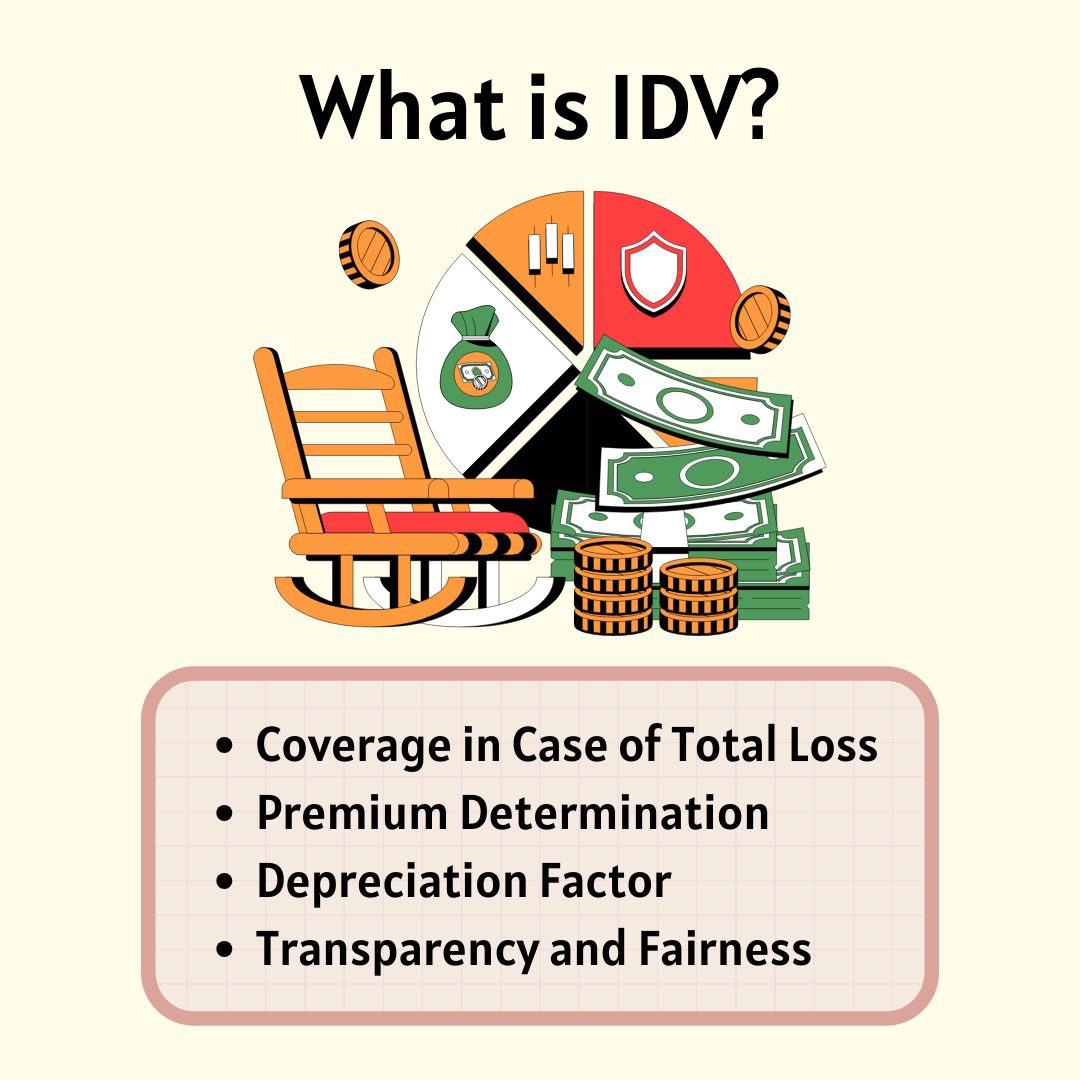IDV Full Form in Insurance: Your Easiest Guide

Why is knowing IDV important? What is IDV full form in insurance? Understanding the IDV helps you choose the right insurance policy for your vehicle. A higher IDV means you’ll get more compensation in case of a total loss, but it also means higher insurance premiums. On the other hand, a lower IDV might save you money on premiums, but you’ll receive less compensation if something happens to your vehicle.
This is exactly why we’ll cover IDV full form in insurance here.
IDV Full Form in Insurance
So, what is IDV full form in insurance? IDV, or Insured Declared Value, is the maximum amount that an insurance company will pay to the policyholder in the event of theft or total loss of the insured vehicle. Simply put, it represents the current market value of the insured vehicle at the time of policy purchase.
Calculating IDV
The calculation of IDV is based on various factors such as the manufacturer’s listed selling price of the vehicle (excluding taxes and registration fees) and the depreciation rate applied based on the age of the vehicle. Typically, the older the vehicle, the higher the depreciation, resulting in a lower IDV.
Significance of IDV
IDV plays a crucial role in determining the premium amount of the insurance policy. A higher IDV generally translates to a higher premium, while a lower IDV results in a lower premium. Policyholders need to strike a balance between opting for a higher IDV for better coverage and affordability of the premium amount.
Importance of IDV in Insurance:
- Coverage in Case of Total Loss: In the unfortunate event of theft or complete damage to the insured vehicle, the IDV serves as the maximum compensation amount that the policyholder can receive from the insurance company. Having an adequate IDV ensures that policyholders can recover a significant portion of their investment in the vehicle.
- Premium Determination: The IDV directly influences the premium amount of the insurance policy. Insurance companies use the IDV as one of the key factors in calculating the premium, along with other parameters such as the age of the vehicle, type of coverage, and policyholder’s driving history. Policyholders should carefully assess their coverage needs and budget constraints when selecting an appropriate IDV.
- Depreciation Factor: Depreciation is a crucial aspect of IDV calculation, as it reflects the reduction in the value of the vehicle over time due to factors such as wear and tear, age, and usage. Understanding the depreciation factor helps policyholders make informed decisions regarding their insurance coverage and ensures that they are adequately protected against financial losses.
- Transparency and Fairness: IDV ensures transparency and fairness in insurance settlements by providing a standardized method for determining the value of insured vehicles. By adhering to predefined depreciation rates and market values, insurance companies can offer consistent and equitable compensation to policyholders in the event of claims.
This is all you need to know about IDV and how it works. If you want more such financial guides on the different types of general insurance, keep checking out the NewsCanvass space.







